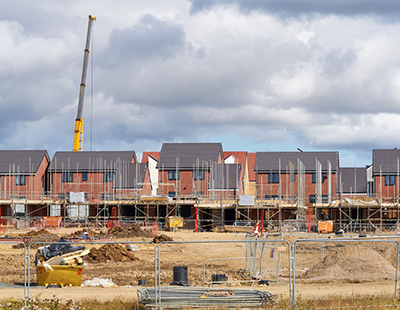The continuing shortage of supply in the lettings market is not only producing record high asking rents, but is also pushing demand up in areas outside of traditional hotspots.
That’s the verdict from Rightmove, in its latest quarterly trends snapshot of the market.
Average asking rents outside of London have risen from £982 pcm over the last year, to take annual growth in asking rents outside the capital to 10.8 per cent - its first time ever above 10 per cent.
Rents in London also hit a new record of £2,193 pcm, rising by 14.3 per cent in a year from £1,919. This is the largest annual jump of any region that Rightmove has recorded.
The imbalance between high tenant demand and the low numbers of properties available continues to drive growth in asking rents.
Across Great Britain, tenant demand is up by six per cent and the number of available rental properties is 50 per cent lower than this time 12 months ago.
This time last year, the number of available properties in London had risen by 19 per cent compared to 2019, as London temporarily fell out of favour with renters. Now, demand is up by 81 per cent and available rental properties are down by 47 per cent in London compared to the more normal 2019 market.
The result of this ongoing mismatch between tenant demand and the properties available to rent means that tenants looking for a new place to move to are being faced with the most competitive rental market that Rightmove has ever recorded.
There are more than triple the amount of tenants enquiring as there are rental properties available, meaning a high likelihood of landlords being able to choose between multiple suitable tenants.
Despite the mismatch of tenants enquiring and rental properties available, there are some positive signs of more property choice.
The number of new rental properties coming onto the market rose by five per cent in March compared to January, and 16 per cent compared to the shorter month of February.
As asking rents increase across Great Britain, with nine regions recording a more than 10 per cent rise in asking rents compared to last year, demand is growing for areas outside of price hotspots that offer the opportunity of lower rents, while still being in commuting distance of the major cities for work or leisure.
Manchester and Liverpool are two of this quarter’s top five rental price hotspots, with asking rents increasing by 19.3 per cent and 17.1 per cent respectively compared to this time last year.
At the same time, demand has increased in areas surrounding Manchester and Liverpool with lower average asking rents - seven of the top ten rental demand hotspots are nearby the cities.
Rightmove’s director of property data Tim Bannister says: “In the first three months of this year, we’ve seen tenant demand exceed the high levels set last year, which when coupled with the fewer available homes for rent, has resulted in the most competitive rental market we’ve ever recorded.
“There are several factors affecting supply and demand. On the supply side, we’re hearing from agents and landlords that tenants are signing longer leases, which has prevented some of the stock that would normally come back onto the market from doing so. When it comes to demand, we’re still seeing the effects of the pandemic, whereby tenants are balancing what they need from a home and how close they need to live to work with where they can afford.”












%20-%20IMAGE%20Client%20Accounting%20%E2%80%93%20what%20are%20your%20options.jpg)
.png)








Join the conversation
Jump to latest comment and add your reply
Don’t worry, Polly Bleat is on the case and will solve all these problems.
The most common response we receive when asked 'Why are you moving?' is ' My landlord is selling.'
The question has to be why are landlords selling in the volumes I haven't seen for 25 years? I can give you plenty of reasons why landlords are exiting the market.
The sad fact of the matter is tenants are now paying the price. Reduced supply = high demand = high costs.
Please login to comment